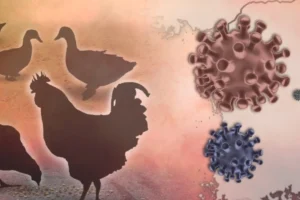
As Kenya decides to provide digital identity to all Kenyans by February 2024, it may find a good partner in India for digital IDs and platforms because of New Delhi’s expertise in the digital sector.
India is a natural choice for cooperation on Kenya’s Digital ID project in particular and digitization efforts in general.
According to Eliud Owabo, the country’s Cabinet Secretary for Information Communications and Digital Economy, Kenya’s issuance of a digital card aims to help people access government services more easily.
This project is different from Huduma Namba (Permanent Identification Number and Card) in that there is no identity card attached to it. The digital identity will only help in the online identification of Kenyans.
The Kenyan official referred to the successes of digital identity programs in India, Estonia, Belgium and Pakistan when deciding on digital identity.
Kenya’s vision for a digital identity for citizens draws inspiration from countries such as India, which has been applauded for effectively providing essential social security and welfare support to the public even during the COVID-19 pandemic.
Digitization has also prevented leakages in providing financial assistance to the poor in India through direct benefit transfers and bypassed multiple layers of institutions and reduced the time taken for transactions.
Owabo stressed that the digital identity would interoperate with the National Information Management System and facilitate a central population database.
All government data about Kenyans will be linked to their digital identities, and all public services will be available through digital channels. Digital ID will be linked to UPI of birth and death.
India’s expertise and experience can not only help Kenya in building population-level public goods (DPGs) – like Aadhaar, (UID), UPI, eKYC, Account Aggregator (AA), Open Credit Enablement Network (OCEN) network, a set of interoperable utilities), Open Network for Digital Commerce (ONDC), but also to optimize the implementation efficiency of social security and welfare programs and financial transactions.
Kenya may seek Line of Credit (LoC) from India for multi-platform public digital IDs and digital platforms, part of which is estimated to cost at least USD 100 million. For Kenya, India is a reliable development partner.
Apart from being trade and investment partners, both the countries can also be seen as maritime neighbours. India is among Kenya’s top six trading partners (bilateral trade USD 2.208 billion) and second largest investor.
There is also a good track record between the two countries in development partnership through support to the farm mechanization project signed in 2017.
India-Kenya people to people relations are also friendly and long lasting. In view of the increasing number of tourists from India to Kenya, direct flights between the two countries are being operated on the Mumbai-Nairobi sector since 2019.
India is in fact the third largest source of tourists to Kenya, excluding tourists from neighboring countries. A vibrant community of persons of Indian origin currently numbers around 80,000 including an estimated 20,000 Indian citizens.
Kenya should explore a greater partnership with India in digital technology. India now counts among the top three digital powers in the world based on the number of people using or involved in its digital networks, the total volume of businesses and start-ups, and internet network and mobile penetration. India’s expertise in this area is credible and excellent.
India can be of great help to Kenya’s plan to help Kenya use its UPI with the NEMIS school platform, the National Hospital Insurance Fund (NHIF) and the National Social Security Fund (NSSF) as it has at least have the expertise and experience to do so. time and cost.
(Source – ANI)
To read more such news, download Bharat Express news apps


















